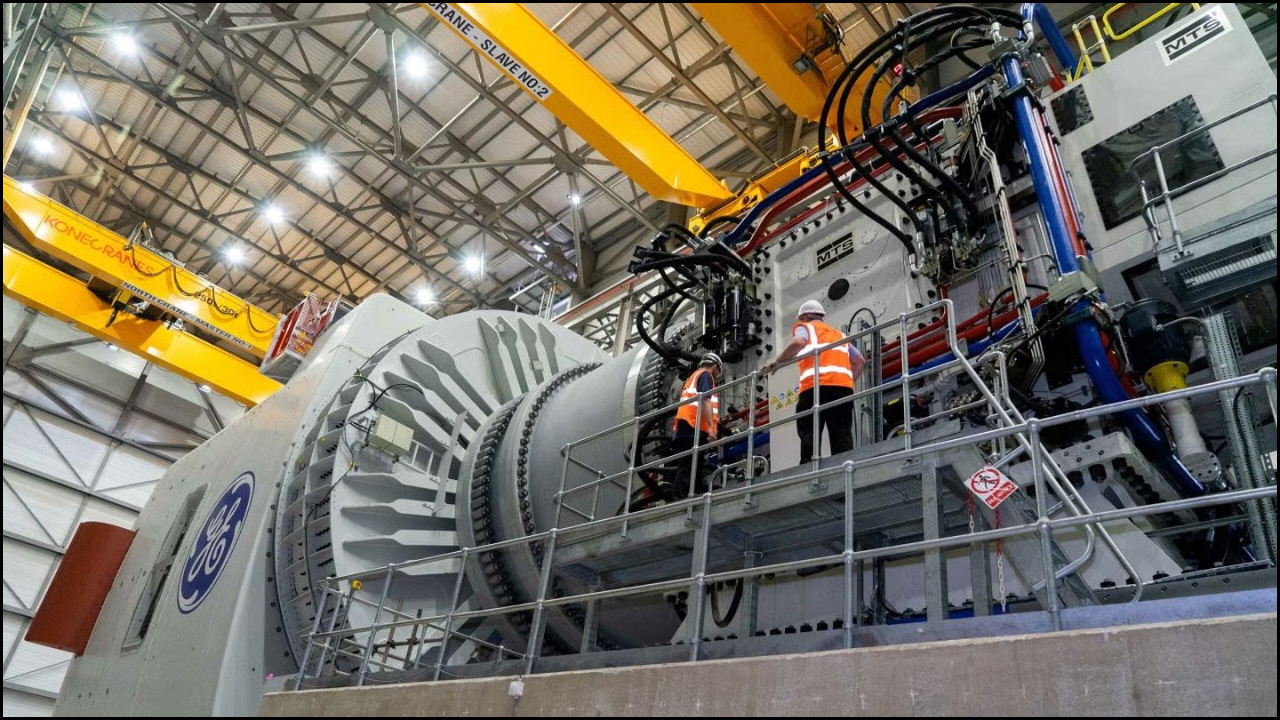
Policy plays a defining role in enabling the rapid expansion of offshore renewable energy. Governments worldwide are developing regulatory frameworks, financial incentives, and environmental standards to encourage investment in offshore wind, tidal, and wave projects. These policies establish a predictable environment for investors, protect ecosystems, and promote technological innovation. Without such structured support, the high costs and technical challenges of offshore development would limit progress toward global net-zero energy goals.
Table of Contents
Importance of Policy in Offshore Renewable Development
Well-designed policies create the foundation for stable, long-term offshore renewable markets. They reduce financial risks and provide clarity for developers, manufacturers, and stakeholders.
- Market Certainty: Policies signal long-term government commitment, encouraging private investment.
- Financial Incentives: Subsidies, grants, and tax benefits make projects economically viable.
- Research Support: Funding for R&D promotes innovation in turbine design, storage, and grid integration.
- Environmental Protection: Policies balance energy development with marine biodiversity preservation.
- Infrastructure Planning: Coordinated frameworks ensure efficient port, cable, and transmission development.
Key Policy Instruments Driving Offshore Energy Growth
| Policy Instrument | Purpose | Outcome |
|---|---|---|
| Feed-in Tariffs (FiTs) | Guarantees fixed payments for renewable electricity producers | Encourages early-stage offshore investment |
| Contracts for Difference (CfDs) | Stabilizes revenue by compensating for price differences | Provides financial security for developers |
| Renewable Portfolio Standards (RPS) | Requires utilities to source a percentage of energy from renewables | Ensures market demand for offshore energy |
| Investment Tax Credits (ITC) | Offers deductions for renewable project expenses | Attracts private sector participation |
| Green Bonds and Loans | Provides low-interest financing for sustainable energy projects | Reduces capital costs for offshore installations |
Regulatory Frameworks and Permitting Policies
Clear and streamlined regulatory processes are essential for scaling offshore projects efficiently.
- Maritime Zoning Regulations: Define designated zones for offshore development to minimize conflicts with fishing, shipping, and wildlife areas.
- Environmental Impact Assessments (EIA): Ensure projects adhere to sustainability and conservation standards.
- One-Stop Permitting Systems: Simplify approval processes by integrating multiple agency requirements.
- International Maritime Coordination: Promotes shared use of ocean resources among neighboring nations.
- Safety and Decommissioning Guidelines: Regulate operations throughout the project lifecycle.
Governmental Support for Research and Innovation
Research and innovation policies accelerate technological advancements and cost reductions. Governments fund collaborative programs between universities, research institutes, and private companies.
| Program Type | Objective | Example Initiative |
|---|---|---|
| Technology Demonstration Grants | Test emerging turbine, wave, and tidal technologies | EU Horizon Europe Projects |
| Public–Private Partnerships (PPP) | Share risk and expertise in offshore deployment | Offshore Renewable Energy Catapult (UK) |
| International Research Collaborations | Promote knowledge exchange and standardization | UK–China NSFC-EPSRC Renewable Collaboration |
| Data-Sharing Policies | Improve transparency in marine environmental data | National Ocean Data Centers |
| Innovation Clusters | Concentrate R&D and manufacturing capabilities | European Offshore Wind Clusters in Denmark and Germany |
Economic Policies Supporting Offshore Infrastructure
Scaling offshore renewables requires significant investment in coastal infrastructure, transmission networks, and port facilities. Economic policies ensure that these needs are met efficiently.
- Port Modernization Programs: Upgrade facilities for turbine assembly and transport.
- Transmission Access Rules: Ensure fair grid connection opportunities for developers.
- Supply Chain Incentives: Encourage local production of blades, cables, and turbines.
- Job Creation Policies: Support workforce training for marine engineering and maintenance.
- Export Promotion Measures: Help domestic industries compete in global offshore markets.
Environmental and Social Policy Considerations
Environmental and social sustainability are central to offshore energy policymaking. These frameworks ensure that clean energy expansion aligns with ecological and community well-being.
| Policy Area | Focus | Expected Benefit |
|---|---|---|
| Marine Conservation | Protects biodiversity and migratory species | Minimizes environmental disruption |
| Coastal Community Engagement | Involves local populations in planning | Builds trust and local economic benefit |
| Sustainable Fisheries Management | Integrates energy zones with fishing rights | Reduces livelihood conflicts |
| Decommissioning and Recycling | Manages end-of-life turbine components | Encourages circular economy practices |
| Public Transparency | Provides open data on project performance | Increases accountability and social acceptance |
International Cooperation and Policy Harmonization
Global collaboration strengthens offshore energy deployment by aligning policies and sharing best practices.
- Regional Marine Planning: The North Sea Energy Cooperation harmonizes offshore grid and permitting processes among EU nations.
- Cross-Border Transmission Projects: Policies enable shared infrastructure between neighboring countries.
- Climate Agreements: Offshore renewables contribute to national commitments under the Paris Agreement.
- Standardization of Safety and Technical Codes: Facilitates international investment and manufacturing integration.
- Global Research Platforms: Collaborative initiatives such as the Newton Fund enhance policy-driven innovation.
Challenges in Policy Implementation
Despite strong frameworks, offshore renewable energy policies face several challenges that can slow progress.
| Challenge | Impact on Deployment |
|---|---|
| Inconsistent Policy Timelines | Short-term incentives discourage long-term investment |
| Complex Permitting Procedures | Delays project approvals and increases costs |
| Limited Grid Capacity | Restricts integration of new offshore power sources |
| Funding Gaps in Emerging Markets | Slows development in developing nations |
| Public Opposition and Visual Concerns | Reduces acceptance of nearshore projects |
The Role of Policy in Driving Private Investment
Private investment is the engine of offshore renewable energy expansion, and government policies are key to building investor confidence.
- Stable Subsidy Frameworks: Long-term financial incentives reduce investment risks.
- Transparent Regulation: Predictable permitting and tariff structures attract multinational developers.
- Insurance and Risk Mitigation Programs: Protect investors from weather and construction uncertainties.
- Corporate Renewable Procurement Policies: Enable companies to purchase offshore-generated electricity directly.
- Carbon Pricing Mechanisms: Make fossil fuels less competitive and strengthen renewables’ economic position.
Technology-Neutral vs. Technology-Specific Policies
Governments adopt two distinct policy approaches to support offshore renewables:
| Policy Approach | Description | Effect |
|---|---|---|
| Technology-Neutral Policies | Allow multiple renewable sources to compete under a common framework | Encourages competition and cost reduction |
| Technology-Specific Policies | Target support to one sector (e.g., offshore wind) | Accelerates innovation in priority technologies |
Case Studies of Effective Offshore Energy Policies
| Country | Key Policy Mechanism | Result |
|---|---|---|
| United Kingdom | Contracts for Difference (CfD) | World leader in offshore wind capacity |
| Denmark | Long-term planning zones and tender system | Stable, competitive offshore market |
| China | Feed-in Tariff and national subsidies | Rapid coastal wind and tidal expansion |
| United States | Federal leasing and state-level tax credits | Growing East Coast offshore projects |
| Germany | Grid connection guarantees and innovation grants | Strong offshore supply chain and R&D base |
Future Policy Directions for Offshore Renewables
The next phase of policy development will focus on resilience, digital integration, and inclusivity.
- Expansion of floating offshore wind and hybrid projects.
- Introduction of AI-driven environmental assessment frameworks.
- Strengthening of international offshore grid interconnections.
- Development of blue economy strategies linking energy, shipping, and aquaculture.
- Implementation of carbon-neutral materials policies in manufacturing.
Socio-Economic Impacts of Offshore Energy Policies
| Impact Type | Description |
|---|---|
| Economic | Policies attract investment and create thousands of green jobs. |
| Social | Community engagement ensures equitable benefit sharing. |
| Environmental | Regulations maintain biodiversity and ocean health. |
| Technological | Research support accelerates innovation and cost reduction. |
Final Thoughts
Policy serves as the driving force behind the large-scale deployment of offshore renewable energy. Strong, consistent, and inclusive frameworks enable nations to transform marine resources into sustainable power while protecting ecosystems and communities. As governments align economic growth with environmental responsibility, strategic policymaking will remain the cornerstone of achieving global renewable energy targets and ensuring a resilient, low-carbon future.





